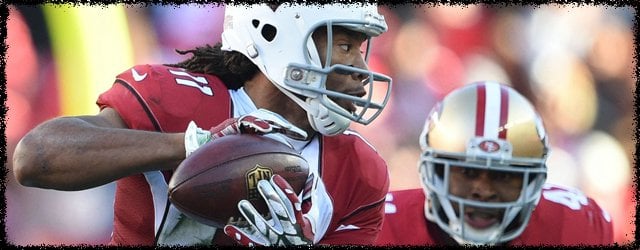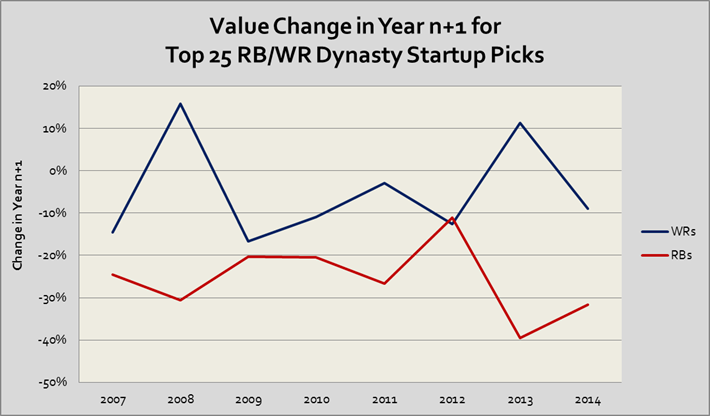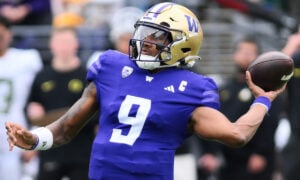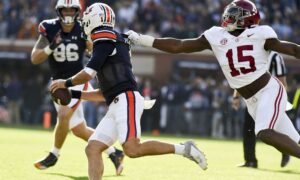Market (Over?) Correction

Editor’s Note: This article is from one of DLF’s new writers, Brian Malone. We’re committed to continuing to bring you the best fantasy football content and opinions in the world and are happy to add Brian’s insights to the team.
How would you like to wake up to this trade proposal in your inbox?
Give: WM, a soon-to-be 27-year-old running back who has never finished higher than RB8 and has never scored more than 233 points in ppr
Get: LF, a soon-to-be 25-year-old wide receiver who twice already has finished as WR5 or better, scoring more than 300 points in each of those two campaigns
That’s the kind of offer you might break your keyboard trying to accept. Amazingly, though, a large group of dynasty owners would view this as an equal trade. Who are these lunatics? They’re startup drafters from 2008:

The above image is a snippet of average draft position (ADP) from 2008 startup dynasty drafts. Most drafters in 2008 were making a mistake that not even the most novice dynasty owner would make in 2015.
This example shows that the shift toward favoring wide receivers in dynasty isn’t just about the NFL trending toward running back by committee and pass-heavy offenses. Dynasty drafters in 2008 were just getting it wrong, and the market was due for a correction.
Boy, did it get a correction!

The chart above, which is based on 2007-15 ADP, shows the number of running backs drafted each year in startups before WR1, WR6, WR18, and WR36 were drafted. (The ADP from 2007 to 2012 comes from startup draft data compiled by DLF forum user cmizelle. The ADP from 2013 to 2015 comes from startup mocks conducted by Ryan McDowell.)
We all know dynasty has seen a shift from running backs to wide receivers, but take a moment to consider just how radical that shift has been. Here are a few highlights from the data, some of which aren’t apparent from the chart:
- In 2007, there were 13 running backs drafted before the first wide receiver went off the board; in March 2015, there were only 12 running backs drafted before the WR24!
- As recently as 2013, owners still were drafting running backs earlier than wide receivers – 23 running backs were drafted before the WR18.
- In 2013, nine running backs were drafted before the WR6. Just two years later, in March 2015, only six running backs were drafted before the WR18.
Not surprisingly, many smart, long-time dynasty owners think the pendulum has swung too far – in economic terms, the market has “overcorrected” – and owners are now overvaluing wide receivers just as they did running backs a few years ago. Indeed, Karl Safchick has suggested as much recently on Twitter and on the DLF Podcast.
However, take a look at the above chart again. In 2015, WR36 is being drafted right around RB24. Given that dynasty leagues typically require two starting running backs and three starting wide receivers, those draft positions aren’t obviously imbalanced. Indeed, given the option to flex a fourth wide receiver in most (and the benefits of flexing a wide receiver over a running back), one could argue wide receivers in the WR36 range are still worth more than similarly priced running backs.
Also consider this – in almost every year since 2007, wide receivers have been the more stable picks at the top of startup drafts.

This chart shows the average “value” loss of the top 25 (combined) wide receivers and running backs drafted each year since 2007. I calculated “value” by taking the ADP data referenced above and converting each player’s ADP using a modified version of the Harvard Value Chart referenced in Alex Eifler’s Trade Value v. ADP article. In every year except 2012 (which was basically a dead heat), the top running backs taken in dynasty startups have lost more value in the following year than the top wide receivers.
[inlinead]And wide receiver value is more stable for good reason. From 2006 to 2013, 37 wide receivers played at least 10 games and scored more than 18 points per game. Of those, 14 (or 38%) met those numbers the following year. During the same period, 41 running backs played at least 10 games and scored more than 18 points per game, but only 10 (24%) of met those numbers the following year. In other words, the top five wide receivers from any given year are significantly more likely than the top five running backs to put up another top five season the following year. (These consistency rates also suggest owners should draft a high number of mid-to-low-cost running backs – the other 76% of 18-point-per-game running backs have to come from somewhere.)
Even in 2014, the top wide receivers retained their value much better than the top running backs, which suggests that they were being drafted appropriately. And, for the most part, wide receivers are being drafted about the same in 2015 as they were in 2014. The main difference is in the WR12 to WR24 range, where wide receivers have gained several spots of ADP – that change should raise red flags, especially because seven of the wide receivers being drafted in this range are rising sophomores (and two are incoming rookies). Indeed, I try to avoid this area of the draft altogether, either by trading up to grab another elite wide receiver or by trading down to take multiple chances on mid-tier running backs.
But there’s another area of the draft where wide receivers still appear to be undervalued – the first six picks. The past several seasons should have taught us not to take on a running back’s volatility when receivers like A.J. Green and Antonio Brown are still on the board. Nevertheless, in five out of the six March DLF mocks, Le’Veon Bell was drafted before at least one of those receivers. And April looks like more of the same, though we’ll see just how his suspension may change things.
In short, the running back/wide receiver market in dynasty has shifted radically over the last decade, probably more so than most dynasty owners realize. But a radical shift does not necessarily mean an overcorrection, and the data suggest that 2014 and 2015 drafters have, for the most part, (finally) gotten it right. Wide receivers may not be the insane value they were a few years ago, but they’re still the safest way to anchor a dynasty team, even at their current cost.
[ad5]
- Dynasty Capsule: Miami Dolphins - January 26, 2019
- Dynasty Capsule: Buffalo Bills - January 21, 2019
- Dynasty Capsule: Carolina Panthers - January 21, 2018

































































